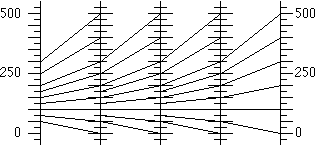Linear
Two packets:
- "Iterating Linear Functions: An Introduction to Dynamical Systems". These are activities which I co-authored with Jonathan Choate for The Mathematics Teacher, February 1997, special issue on Algebra. Use them to introduce these ideas.
- Teacher's Guide (PDF)
- Student Sheets (PDF)
- Some lessons from Algebra: Themes, Tools, Concepts, (1994) the book I co-authored with Anita Wah. You can use "Instant Riches" before the above packet, and the rest as a source of additional problems, homework, and assessments. Two PDF files:
- Teacher's Guide (PDF)
- Student Sheets (PDF)
There is a difference in terminology between the two packets: what is known as a "time series graph" in the first is called "linked function diagrams" in the second.
Both packets require technological support, such as a spreadsheet program, a graphing calculator, Fathom, Desmos, or GeoGebra.
- GeoGebra applets:
- with a table | with linked function diagrams | with a 'cobweb' graph
- Fathom files:
- Arithmetic
- Linear
Quick review/overview of key concepts, plus derivation of an explicit formula for the nth iterate. (For 11th/12th graders, or teachers.)
- I created this applet (Tri, Tri Again) to illustrate a wonderful (and unexpected?) application of these ideas to geometry, by Rachel Chou:
- Triangles and Iteration (PDF)
Non-Linear
- After this, we are ready for a more formal approach to the above material, and an exploration of the iteration of some non-linear functions:
- See Infinity, Unit 2: Chaos
- Finally, a number-theoretic extension:
- Iterating `f(x)=2|x|-2`
